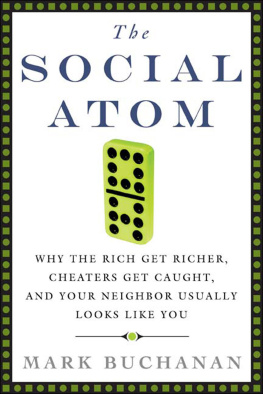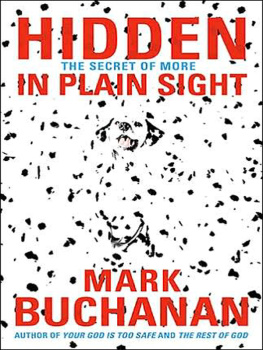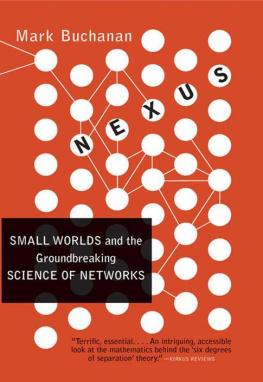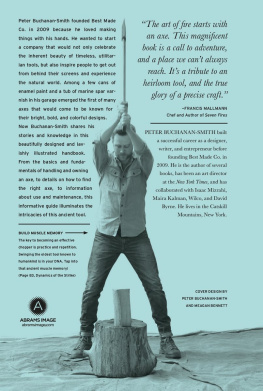THE SOCIAL ATOM
BY THE SAME AUTHOR
Ubiquity
Nexus
THE
SOCIAL ATOM
Why the Rich Get Richer, Cheaters
Get Caught, and Your Neighbor
Usually Looks Like You
Mark Buchanan

Copyright 2007 by Mark Buchanan
All rights reserved. No part of this book may be used or reproduced in any manner whatsoever without written permission from the publisher except m the case of brief quotations embodied in critical articles or reviews.
For information address Blooiusbury USA, 175 Fifth Avenue,
New York, NY 10010.
Published by Blooiusbury USA, New York
Distributed to the trade by Holtzbrinck Publishers
All papers used by Blooiusbury USA are natural, recyclable products made from wood grown m well-managed forests.The manufacturing processes conform to the environmental regulations of the country of origin.
LIBRARY Or CONGRESS CATALOG ING-IN-PUBLICATION DATA
Buchanan, Mark.
The social atom : why the rich get richer, cheaters get caught, and your neighbor usually looks like you / Mark Buchanan,
p. cm.
eISBN: 978-1-59691-731-6
1. Collective behavior. 2. Segregation. 3. Ethnic relations. I.Title.
HM866.B83 2007
302.3'5dc22
2007001088
First U.S. Edition 2007
1 3 5 7 9 10 8 6 4 2
Typeset by Westchester Book Group
Printed in the United States of America by Quebecor World Fairfield
CONTENTS
I N THE EARLY 1970s, it seemed pretty obvious to most people that the stubborn persistence of racial segregation in New York, Chicago, and other U.S. cities had a lot to do with racism. Blacks were confined to inner-city enclaves of desperate poverty, with whites in affluent surrounding suburbs. Studies had found widespread racial bias on the part of businesses, in hiring, promotion and pay, and in the real estate industry, which tried to keep blacks out of white neighborhoods. The link between racism and segregation seemed undeniable. Even so, an economist at Harvard University wondered if everyone might be overlooking a less obvious but more important factor. Thomas Schelling wondered if racial segregation might, in principle, have absolutely nothing to do with racism.
Schelling set out to explore his idea with an unusual methodusing a checkerboard and a handful of coins. The squares on the checkerboard were meant to represent houses, and the coins peopledarker coins for blacks, lighter coins for whites. On the grid, he first placed an equal number of black and white coins, mixed at random, depicting a fully integrated society. Then he began moving the coins around to see how this society's makeup might change with time. The idea was to make simple assumptions about the factors that might influence people's movements, then use the coins to see what this might lead to. In a first experiment, Schelling supposed that people, being racist, would move houses if they looked to their neighbors and found even one person from the "other" race. Considering each coin in turn, he used this rule to see if it should stay put or move to some open square nearby. Unsurprisingly, he found that the society segregated quickly, light and dark coins gathering together. Racism can cause segregationno surprise there.
But if you see segregation, is it necessarily caused by racism? This is a different question, and to answer it, Schelling devised a second experiment. Now he supposed that everyone would be perfectly happy to live next door to members of the other race and made only one minor concession to the reality of human nature. Even racially tolerant people, he mused, might prefer to avoid being part of an extreme minority. A white man might have black friends and colleagues and be happy to live in a predominantly black neighborhood. Just the same, he might prefer not to be one of the only whites living there. This isn't what we ordinarily think of as a "racist" attitude. In this experiment, Schelling supposed that all people would stay where they were unless they looked around and found that they were part of an extreme minority of less than, say, 30 percent.
You might expect that with everyone being content with full racial integration, the initial mixing of black and white would persist. But Schelling found, to the contrary, that the coins again segregated into entirely distinct enclaves. Figure 1, from a modern computer version of this experiment, shows how a well-mixed society, on the left, turns naturally into a segregated society, on the right, even though no single individual would have wanted this.

Figure 1
Paradoxically, people's innocent preference to avoid living in an extreme minority ends up obliterating mixed communities altogether. In a short paper in 1971, Schelling announced a bizarre conclusionthat even if every trace of racism were to vanish tomorrow, something akin to a law of physics might still make the races separate, much like oil and water.
Schelling's segregation game is one of the all-time classics of social science. It obviously implies that anyone looking at racial segregation had better think long and hard before placing the blame solely upon racist attitudes. But it also holds a more general message. We tend to think that the behavior of a group or community should, in a fairly straightforward way, reflect the character of the people making it up. If a mob of people go crazy, rioting and smashing up storefronts, we usually seek an explanation in their individual anger and what caused it. This seems almost obvious, and yet Schelling's game implies that this idea is in fact a fallacy; that social outcomes needn't, at least in some cases, reflect in any obvious way the desires or intentions, habits or attitudes, of anyone at all. It suggests that something may be deeply out of kilter with our intuition about how the human world works.
But Schelling's work also offers a positive messagethat a good way to get some insight into the human world is to step back from our usual fixation on the nuances of individual human psychology, and to follow a more simpleminded approach. We should think of people as if they were atoms or molecules following fairly simple rules and try to learn the patterns to which those rules lead. His implicit point is that seemingly complicated social happenings may often have quite simple origins, and that we can discover such simplicity by examining how we too may be subject to laws not unlike those of physics. This book is an exploration of that ideaand of a deep shift in science associated with it.
A few years ago, I worked as an editor for Nature, arguably the world's premier journal of science. I noticed then that the authors of some of the research papers landing on my desk were quite seriously seeking to find mathematical regularities in the human world of the kind we know from physics; in effect, they were trying to do social science along the lines of physics. In retrospect, I think I now recognize what was happeningafter many years of neglect, researchers were finally beginning to take Schelling's way of thinking seriously Since then, an explosion of modern research in what I like to call "social physics" has convinced me that we stand at an important moment in history We're now witnessing something akin to a "quantum revolution" in the social sciences. While we may be a long way from identifying strict "laws" for the human world, scientists have discovered lawlike regularities there and now recognize that such regularities in no way conflict with the existence of individual free will; we can be free individuals whose actions, in combination, lead to predictable outcomes for the collective. This is much as one finds in physics, where atomic-level chaos gives way to the clockwork precision of thermodynamics or planetary motion.
Next page













